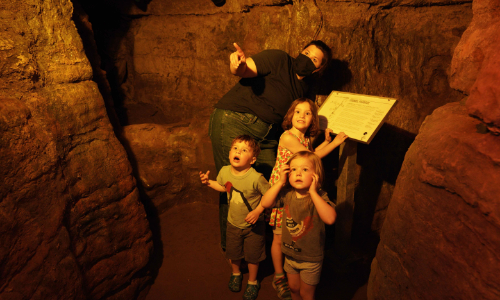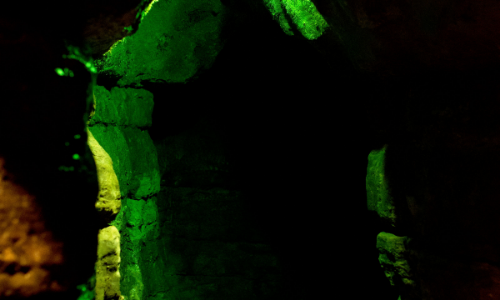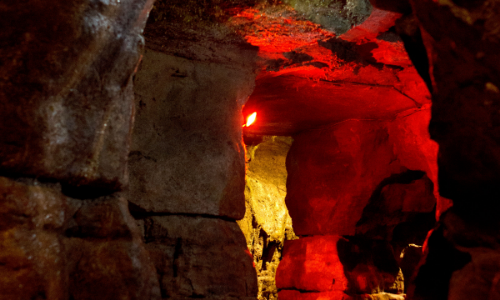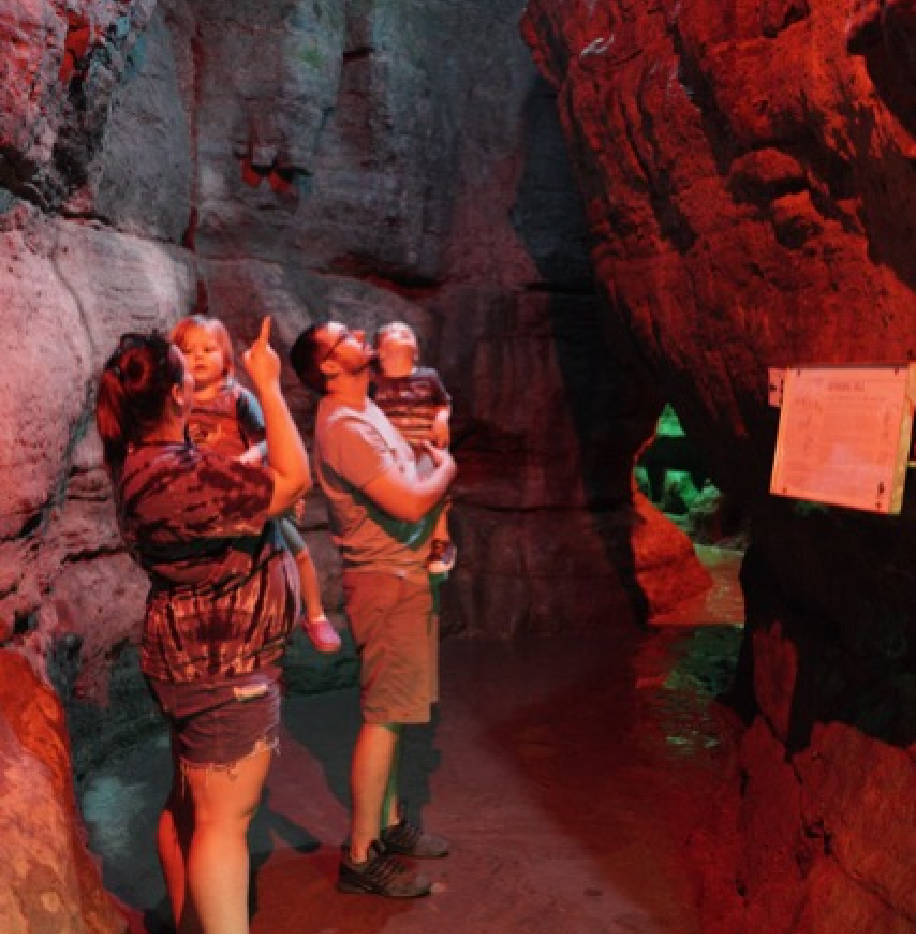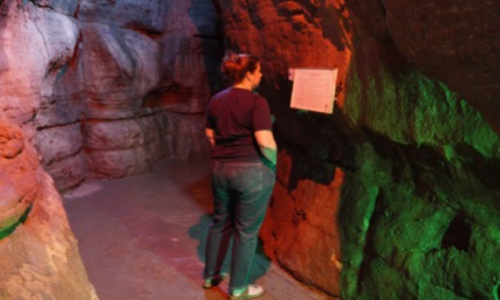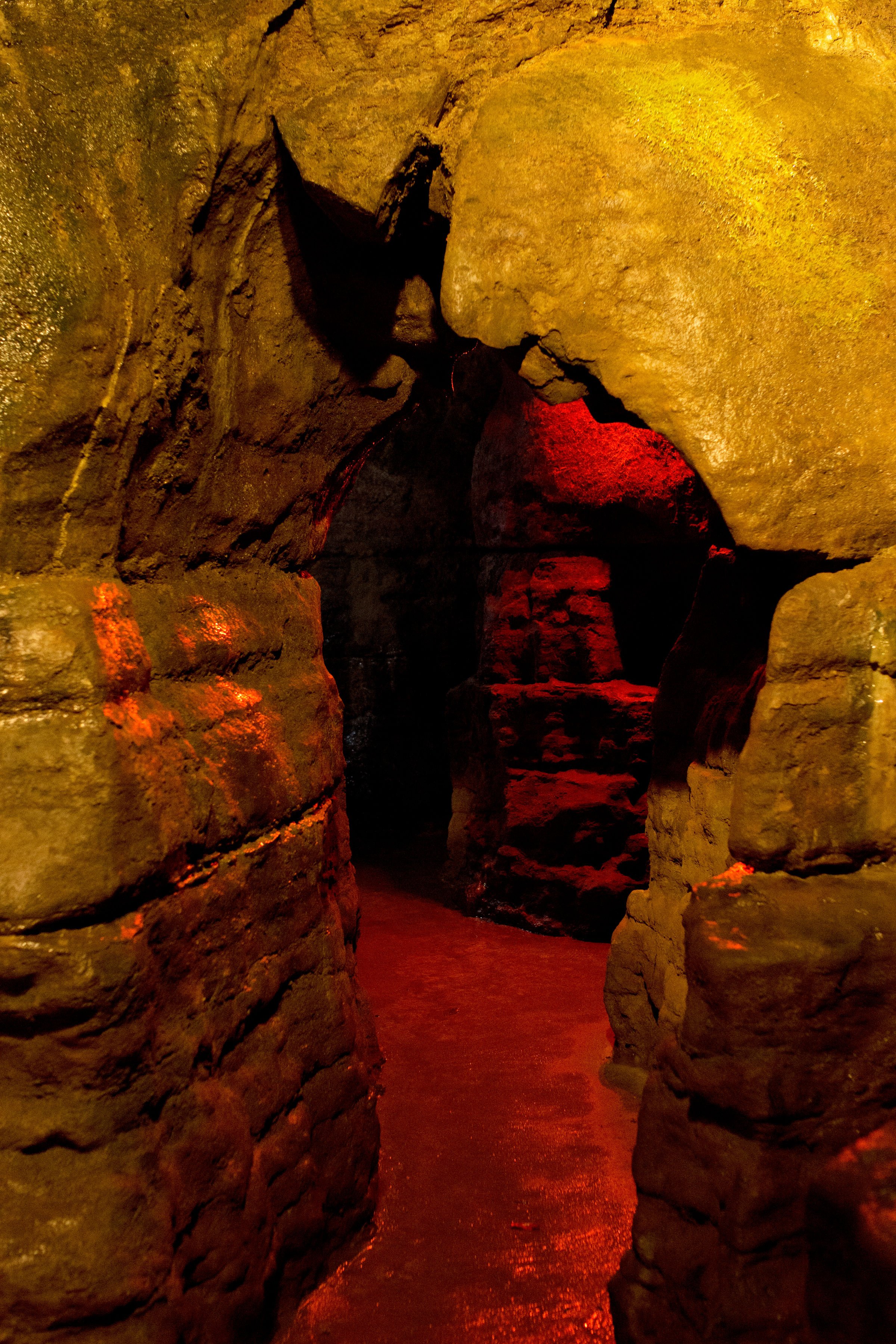
Cavern Tours
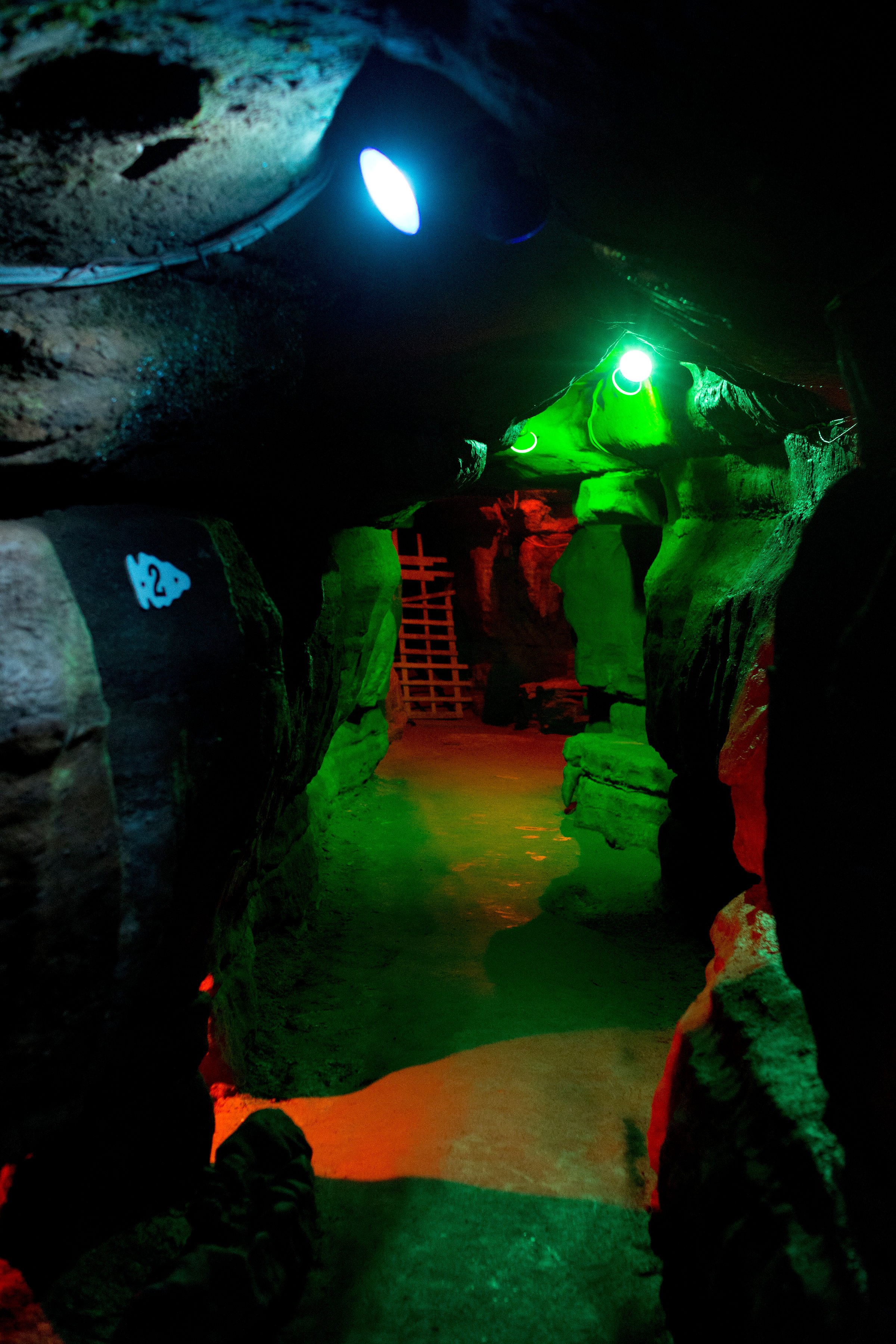
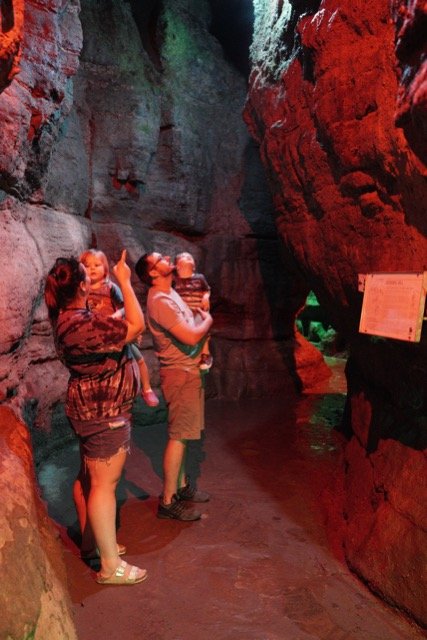
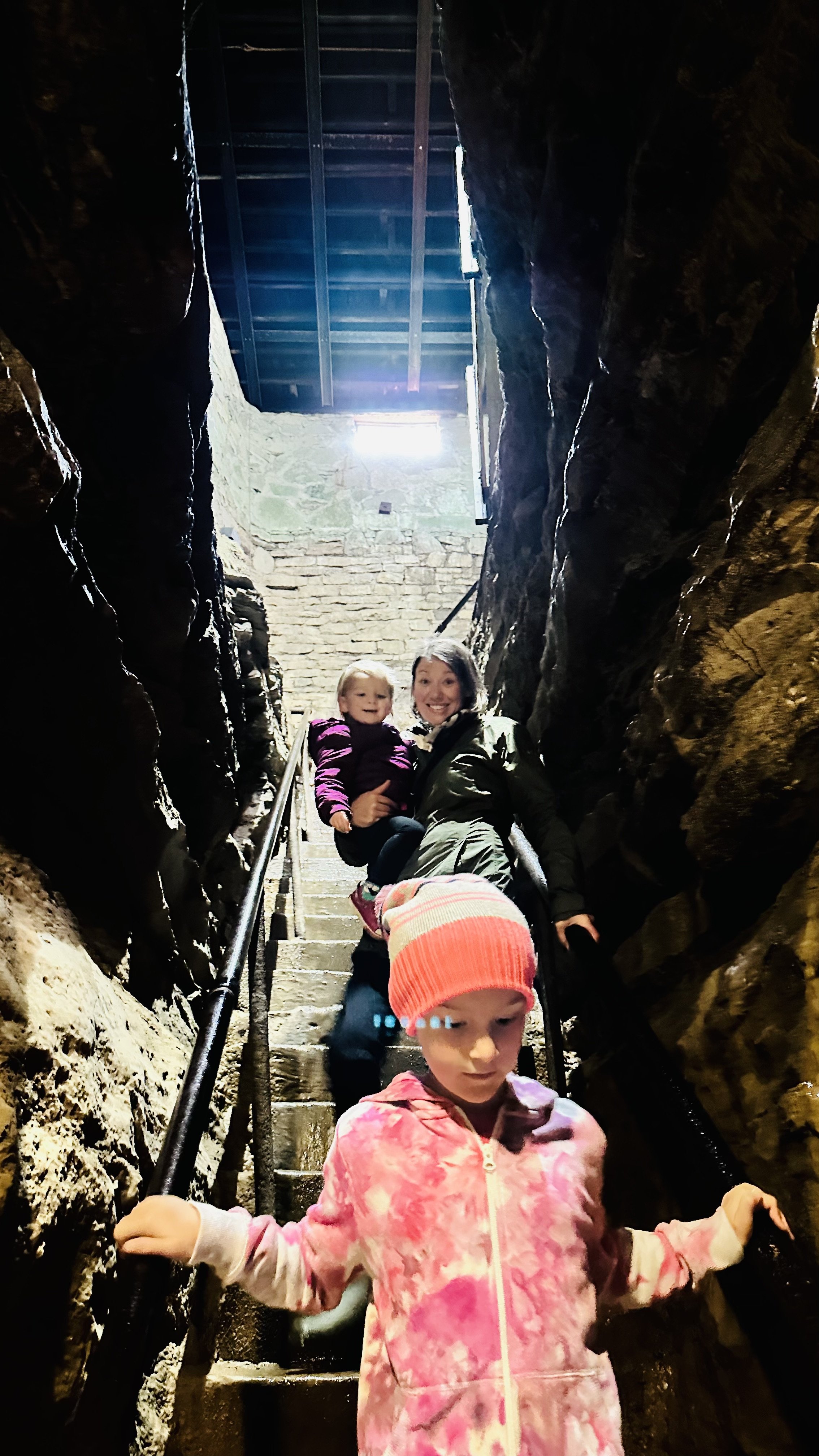

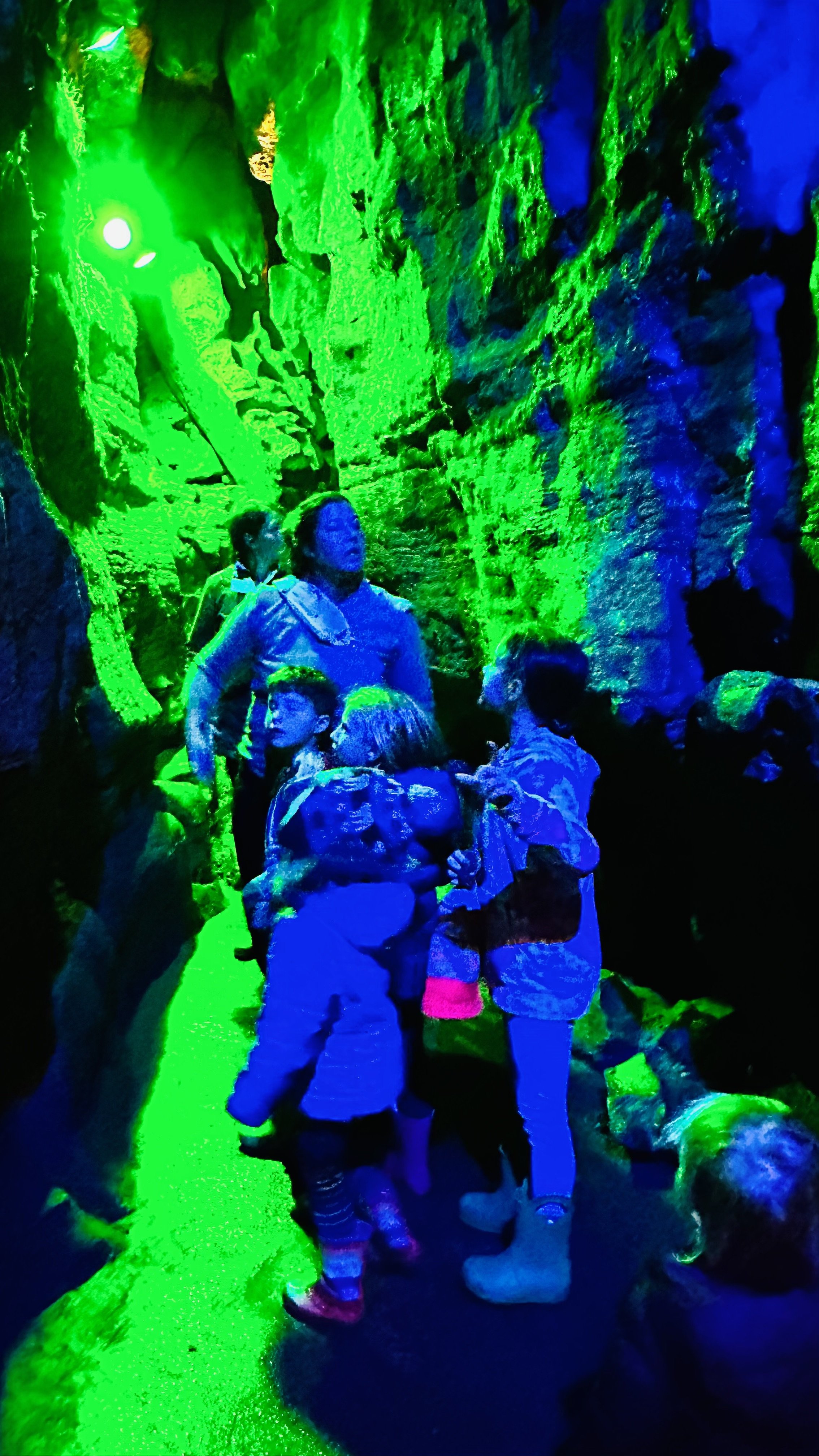
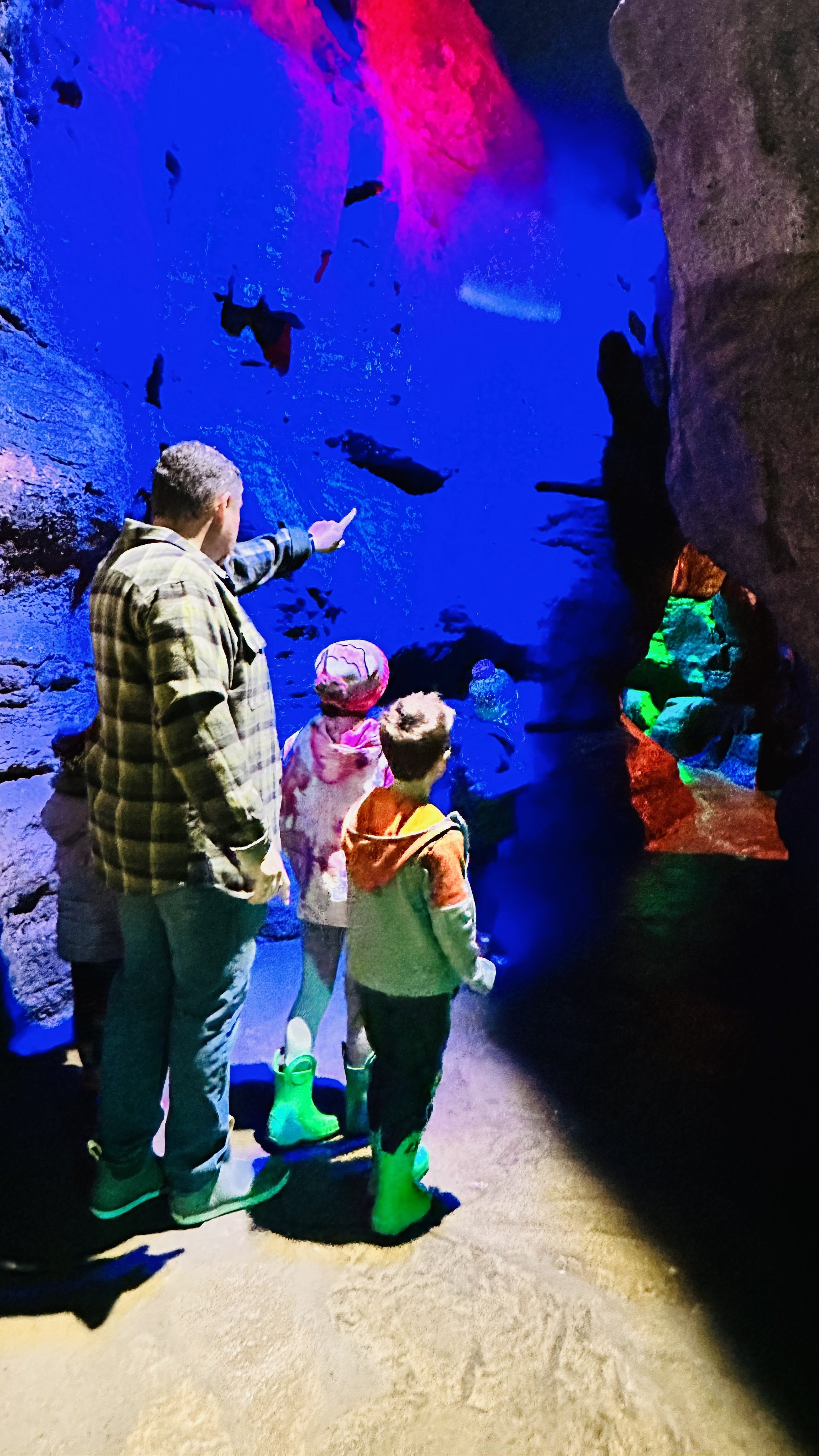

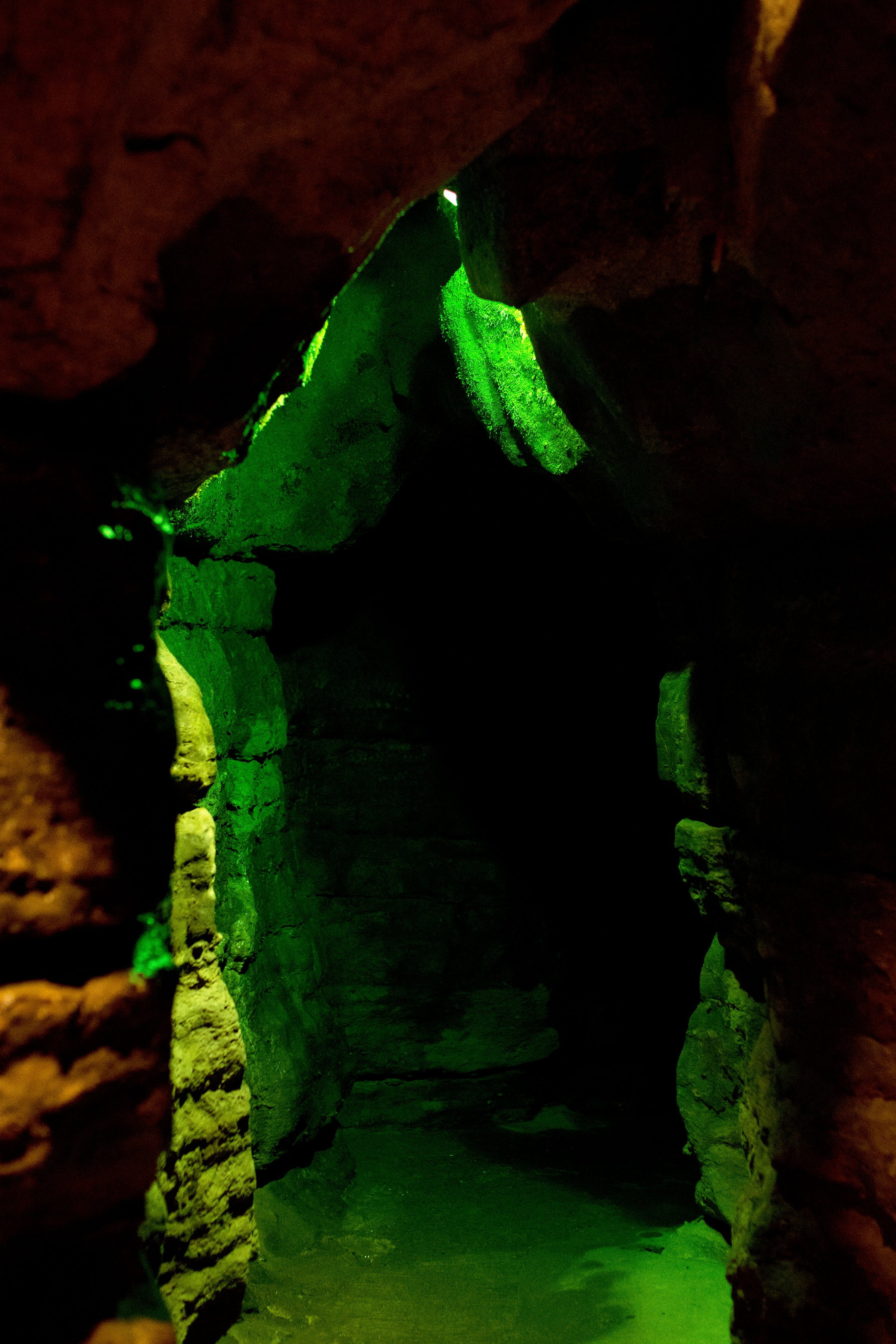
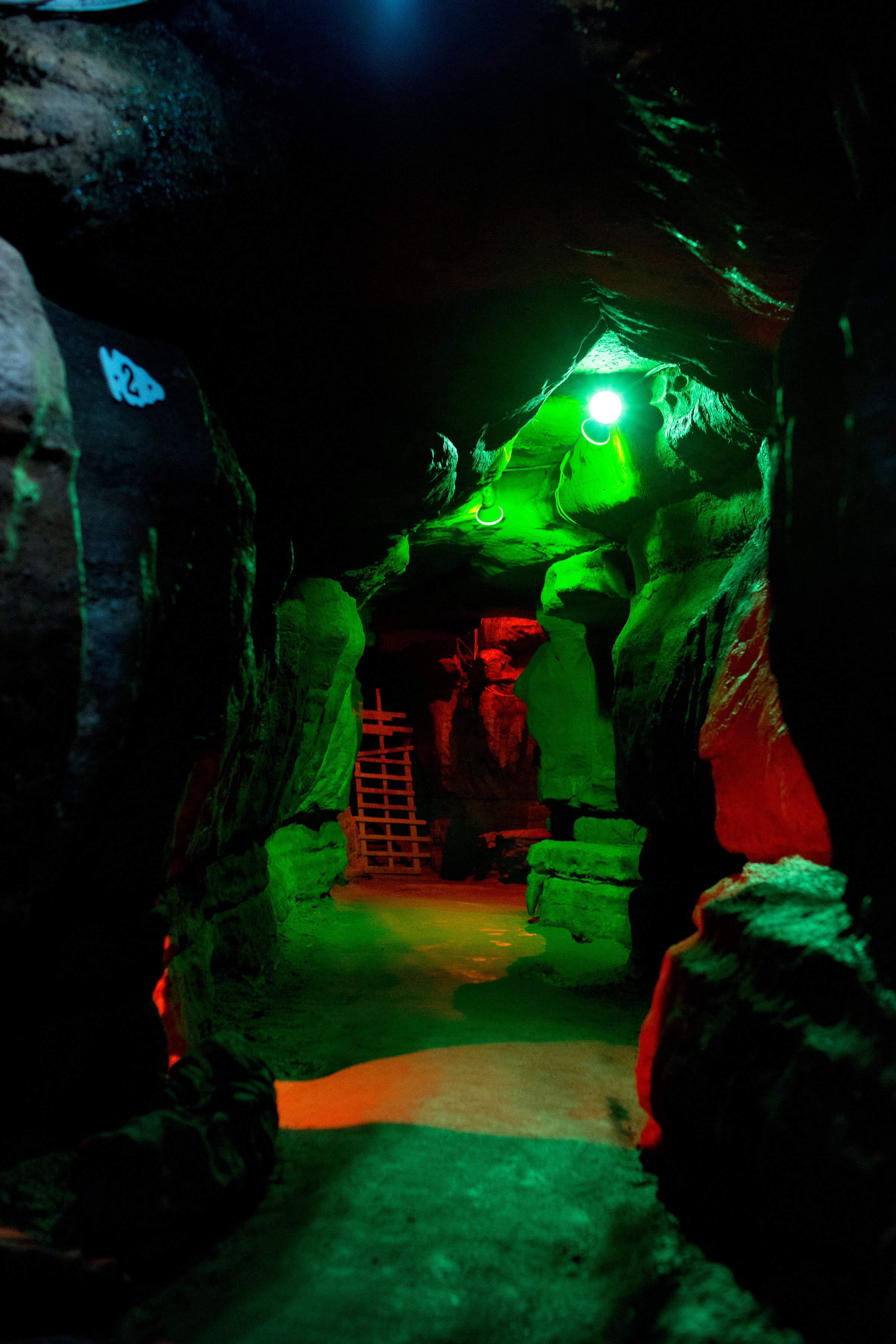
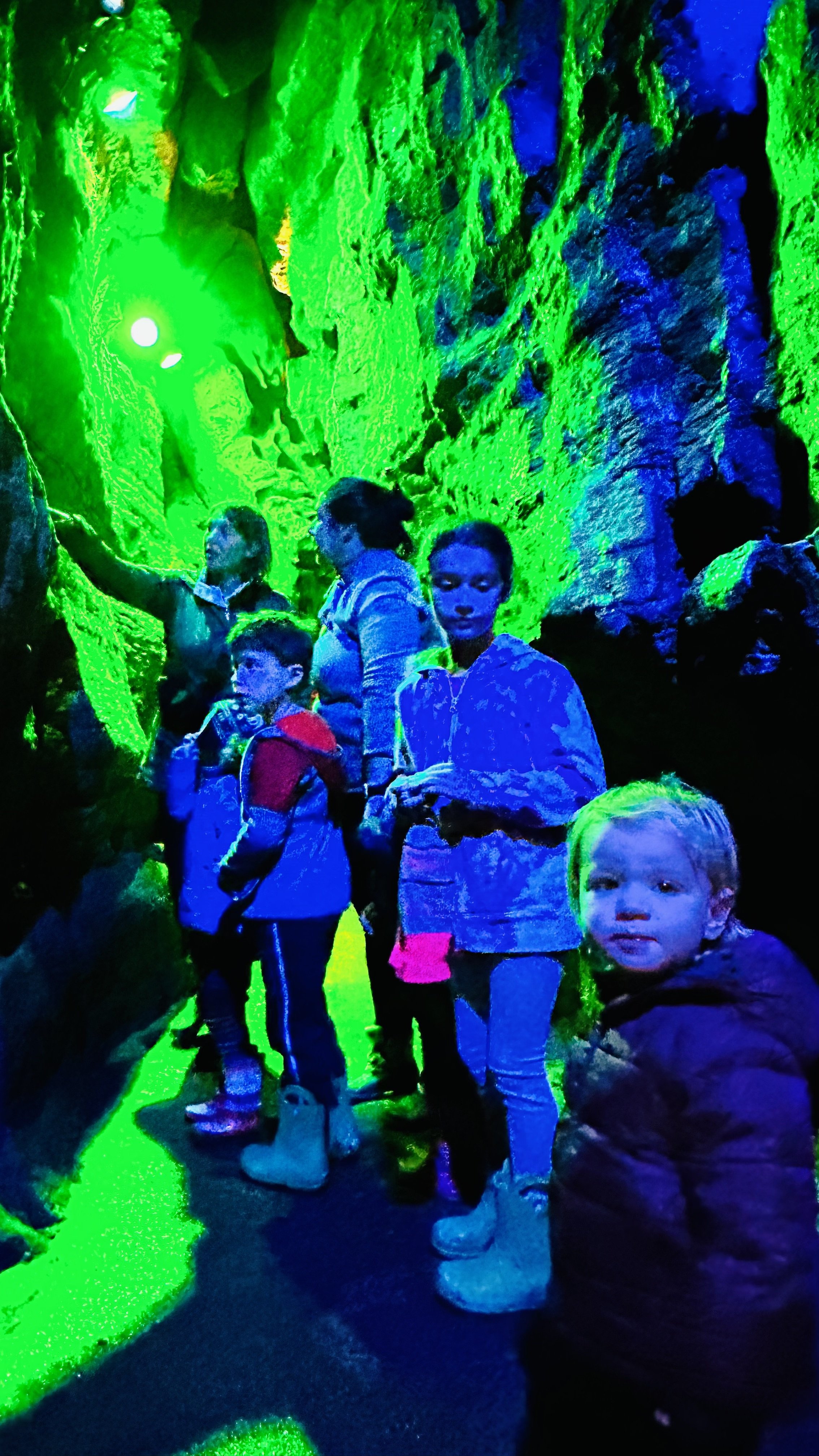

Self-Guided Cave Tours
How Does That Work?
Purchase admission in the gift shop or online.
The gift shop staff will provide a map and instructions to enter the cave.
Explore the caverns at your leisure. Seven audio stations and educational plaques share information about local history, geology, and Native American lore.
The tour takes 20 - 30 minutes, depending on your pace.
Cave Questions
Before You Visit:
The cave is accessible ONLY by stairs. There is one stairwell with 58 steps which is the entrance and exit.
The stairs and cave floor are cemented for safety reasons. But rainwater is always seeping through the ground. Safe, comfortable shoes with non-slip soles are required to enter.
You may get a little wet or brush up against a muddy wall when walking through tight passages.
For families: Olentangy Caverns is a great first caving adventure for kids. With our self-guided approach, you can explore at your own pace, visit the same room multiple times, and rest easy knowing little ones won’t get squirmy on a long, formal tour intended for adults.
For advanced spelunkers: Olentangy Caverns is NOT known for exceptional formations. Most areas experienced damage when the cave was filled with dirt in the late 1800s after being considered a safety hazard. Visitors come to learn about local Native American history, geology basics, and enjoy above-ground activities with friends and family.
A Unique Experience Full of History and Natural Wonder
Formed millions of years ago by the act of water cutting through solid limestone rock, Olentangy Caverns offers a fantastic first-time caving experience for families in central Ohio. Learn local history and Native American lore while walking through winding passages and underground rooms.
The Wyandot tribe may have used these caverns as a haven from the weather and from their enemies, the Delaware tribe. Various artifacts originally found in the caverns indicate that the Council Room may have been used by the Wyandots to make arrows and other stone implements until as late as 1810.
The first settler believed to have entered the caverns was J. M. Adams, a member of a westbound wagon train that camped nearby in 1821. During the night one of his oxen broke loose and wandered off. In the morning the ox was found dead at the bottom of the entrance to the cave. After exploring the entrance, Adams carved his name and date on the wall. The carving still remains but is hard to see due to being partially covered by flowstone.
Columbus, Ohio Cave History
In the mid-to-late 1800s, it’s believe that the caverns were considered a safety hazard and the entrance was filled. In the 1930s, two local families purchased the land and excavated the cave.
On July 4, 1935, the caverns were first opened for public tours. Based on archived newspaper clippings, the caverns property was often used as a meeting place for family reunions in the 1940s and 1950s.
Concrete stairways descend to the maze of natural passages and rooms occupying three different levels: 55, 75, and 105 feet underground. The second level contains Battleship Rock and The Crystal Room. Fat Man's Misery is a passage leading to Cathedral Hall and Bell Tower room which are the lowest area (105 feet) below ground.
A fourth level — where an underground stream is believed to flow to the Olentangy River — has been partially explored but not opened to the public. Many miles of passages have never been excavated.

